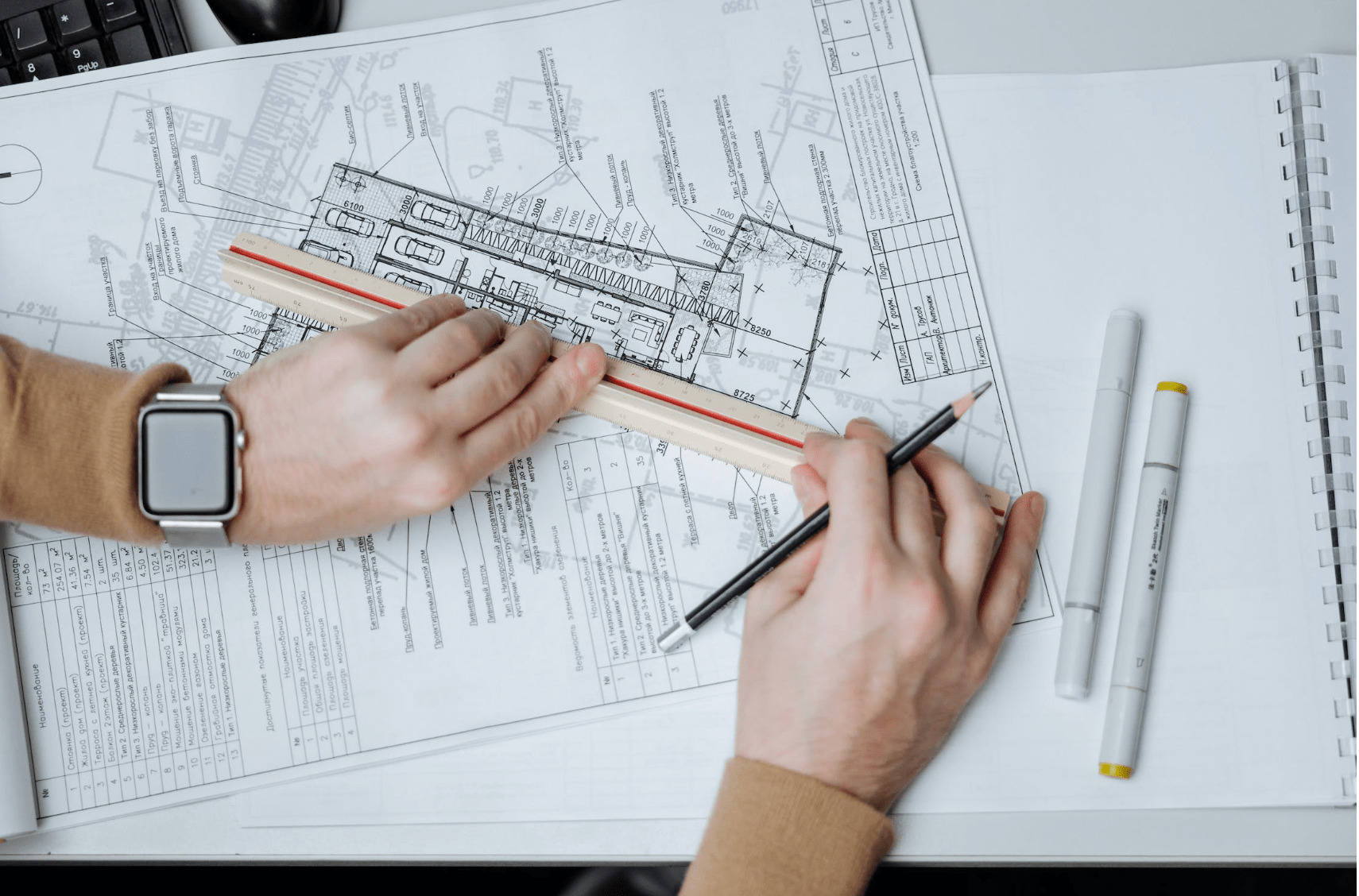Architect Hiring Guide for Property Owners and Builders
Architect Hiring Guide for Property Owners and Builders
Blog Article
Comprehending the Diverse Career Paths Available for Aspiring Architect
As a hopeful Architect, you have a world of job courses waiting for you. Whether you're drawn to standard architecture or the nuances of lasting style, there's a niche that lines up with your rate of interests.
Typical Style: Designing Structures and Frameworks
Conventional design focuses on developing buildings and frameworks that mix capability with aesthetic appeal. Your layouts can mirror cultural heritage, showcasing regional customs while meeting contemporary needs.
You'll develop skills in composing, model-making, and website analysis, allowing you to imagine and interact your ideas properly. Engaging with customers, you'll need to comprehend their vision and convert it into viable styles.
Moreover, developing codes and sustainability techniques are crucial in your work, ensuring your structures are risk-free and eco pleasant. As you grow in your occupation, you'll find possibilities in residential, commercial, and even reconstruction tasks, each offering unique challenges. Welcoming standard design leads the way for a meeting career that admires the past while forming the future.
Urban Preparation: Shaping Communities and Public Spaces
As a hopeful Architect, you can play an essential role as a metropolitan coordinator, transforming just how communities operate and interact. By employing neighborhood involvement strategies, you'll guarantee that residents have a voice in shaping their setting. Plus, incorporating lasting style principles will aid develop spaces that not just fulfill today's needs but additionally secure the future.
Role of Urban Planners
While many could assume of engineers as the single visionaries behind structures, urban coordinators play a necessary function in shaping the wider landscape of areas and public areas. By teaming up with different stakeholders, you'll assist create parks, transport systems, and household areas that promote social communication and availability. Your expertise in spatial design and community dynamics permits you to visualize future development while protecting cultural heritage.
Area Engagement Methods
Reliable area interaction approaches are vital for city planners to assure that the voices of citizens are listened to and valued in the preparation process. To promote meaningful discussion, you must prioritize open online forums and workshops where area participants can share their concepts and problems. By actively including and listening comments, you'll develop spaces that mirror the neighborhood's requirements, ultimately leading to more sustainable and successful metropolitan environments.
Sustainable Style Concepts
When designing city areas, incorporating lasting design principles is important for developing atmospheres that prosper both ecologically and socially. You need to start by focusing on power efficiency, using products that decrease waste and promote recycling. Think about incorporating environment-friendly spaces, like parks and gardens, to improve biodiversity and enhance air high quality. Promoting walkability and public transport can decrease dependence on cars, promoting a healthier area.
Creating with water preservation in mind is also essential-- think of rain gardens and absorptive surface areas to handle stormwater. Involving area participants throughout the planning procedure assurances that the rooms you produce meet their demands and motivate social interaction. By embracing these principles, you'll add to vibrant, lasting city landscapes that profit every person.

Landscape Design: Developing Lasting Outdoor Environments
As you discover landscape design, you'll uncover vital design principles that create functional and attractive outside rooms. Lasting techniques play an important function in making certain these settings flourish while reducing ecological influence. Plus, you'll discover a range of occupation possibilities that permit you to make a genuine distinction in exactly how people interact with nature.
Style Concepts in Landscape
Recognizing style concepts in landscape design is crucial for producing sustainable outside atmospheres that balance with nature. You'll need to consider components like percentage, equilibrium, and scale to ensure your designs really feel natural and inviting. Furthermore, pay focus to seasonal modifications, developing with products that match the surroundings year-round.
Lasting Practices Review
Lasting methods in landscape architecture not only concentrate on aesthetic appeals but also prioritize eco-friendly wellness and resource conservation. By integrating indigenous plants, you enhance biodiversity and reduce the requirement for chemical plant foods and pesticides. Implementing efficient watering systems helps save water and reduces drainage, shielding close-by communities. You can create rooms that advertise soil health and wellness, such as exercising and using natural products permaculture concepts. Furthermore, including green facilities, like rainfall gardens and permeable sidewalks, aids in stormwater management and lowers urban warmth. You add to a healthier earth and offer rooms that promote community link when you create exterior environments with sustainability in mind. Ultimately, these methods guarantee your styles profit both people and the setting for years to find.
Career Opportunities Exploration
With a solid structure in sustainable methods, landscape design provides a variety of career paths that enable you to make a meaningful influence on the environment. You can work as a landscape designer, creating aesthetically pleasing and useful outside rooms, or specialize in environmental reconstruction, helping to restore broken communities. Urban planners commonly collaborate with landscape engineers to develop green spaces in metropolitan settings, boosting city livability. If you're passionate concerning education, consider becoming a landscape style instructor, inspiring future generations. Furthermore, you may deal with nonprofits concentrated on environmental sustainability or involve in research to introduce brand-new practices. Each path not just forms stunning settings but likewise cultivates a healthier earth for future generations.
Sustainable Design: Concentrating On Eco-Friendly Practices
As you discover your job in design, welcoming eco-friendly techniques can set you apart in a competitive area. Sustainable layout concentrates on producing structures that minimize ecological effect while boosting resident wellness. By including renewable products, energy-efficient systems, and lasting structure strategies, you'll add to a greener future.
Beginning by gaining understanding of eco-friendly qualifications like LEED or BREEAM, which can bolster your credentials. Take into consideration how natural light, air flow, and thermal performance can enhance layout. Collaborate with engineers and ecological professionals to introduce options that reduce waste and conserve resources.
Don't forget the relevance of area participation-- appealing local stakeholders can influence styles that balance with the atmosphere. As clients progressively focus on sustainability, your know-how in environment-friendly techniques will not only draw in tasks but also accomplish read more your interest for responsible design. Embrace this crucial aspect of the occupation, and watch your career thrive.
Historic Preservation: Protecting and Bring Back Social Heritage
While you start on your building journey, think about the vital function of historical preservation in maintaining our social heritage. This field concentrates on the security and remediation of significant structures, sites, and frameworks that tell the stories of our past. By participating in historic conservation, you'll help guard the architectural heritage that forms area identity.
As a historic conservation Architect, you'll examine historical value and assess the condition of frameworks. You'll function carefully with preservationists and historians to ensure genuine restoration strategies are employed. This profession course allows you to mix creativity with study, allowing you to create remedies that value original products and workmanship.
Your job not only adds to sustainability by recycling existing structures however additionally fosters a sense of pride within communities. Embracing this path will certainly assist you come to be a guardian of background, preserving the stories and looks that enhance our lives.
Interior Design: Enhancing Indoor Spaces
Historic preservation and indoor style both share a dedication to boosting the built atmosphere, however they concentrate on get more info various elements. While historical preservation stresses preserving a structure's social and historic worth, interior design absolutely nos in on maximizing interior areas for functionality and aesthetics.
As a hopeful Architect, you'll locate that interior style allows you to mix creative thinking with technical abilities. You'll make rooms that not just look excellent yet likewise promote comfort and performance. This field entails understanding just how light, color, and products communicate within an area, influencing mood and use.
You'll work with various projects, from domestic homes to industrial offices, making certain that each atmosphere satisfies the demands of its occupants. By focusing on customer experience, you can change insides into motivating and functional rooms, making a significant effect on exactly how individuals connect with their environments. Embrace the possibility to improve interior settings and shape the way people live and work.
Industrial Layout: Combining Capability With Visual Appeals
Commercial layout plays a vital role in developing products that effortlessly blend looks with capability, making certain that what you utilize daily is not only visually appealing yet likewise practical. As an aspiring Architect, you might engage yourself in this area, focusing on designing everything from furnishings to customer electronics. Your job involves comprehending individual needs, products, and manufacturing processes, enabling you to develop ingenious remedies that enhance everyday experiences.
In industrial design, you'll frequently work together with online marketers, designers, and makers, guaranteeing that your styles are not only stunning yet additionally viable. You'll learn to stabilize form and function, prioritizing usability without compromising design. By honing your skills in sketching, 3D modeling, and prototyping, you'll be fully equipped to bring your ideas to life. This career course provides a dynamic atmosphere where imagination satisfies practicality, making it a rewarding choice for engineers thinking about shaping the products of tomorrow.
Regularly Asked Questions
What Educational Accreditations Do I Need to Come To Be a Designer?
To end up being a designer, you'll require a professional degree in architecture, usually a Bachelor's or Master's. Furthermore, you'll have to complete an internship and pass the Architect Registration Assessment to practice lawfully.
Are There Certification Requirements for Different Building Profession Paths?
Yes, there're certification requirements for various architectural courses. Architect. You'll require to pass exams, complete teaching fellowships, and sometimes pursue specialized training, depending upon your picked emphasis, like landscape architecture, urban Architect style, or historical preservation
What Software Application Abilities Are Important for Engineers Today?

How Can I Gain Practical Experience While Studying Design?
You can get useful experience by interning at architectural firms, getting involved in style competitions, volunteering for neighborhood jobs, or working together with classmates on real-world projects. These possibilities enhance your abilities and construct important links in the sector.
What Job Opportunities Exist Outside Standard Style Firms?
You can discover various task opportunities outside conventional style firms, like city preparation, indoor design, landscape style, building and construction monitoring, property development, and even duties in sustainability consulting. Each deals distinct obstacles and rewards.
Whether you're attracted to conventional design or the nuances of sustainable design, there's a specific niche that straightens with your rate of interests.When creating metropolitan rooms, including lasting design principles is crucial for producing settings that grow both environmentally and socially.As you explore landscape style, you'll discover necessary design principles that produce stunning and useful outside areas.Comprehending design principles in landscape style is vital for producing sustainable exterior environments that harmonize with nature.In industrial layout, you'll commonly collaborate with suppliers, engineers, and marketers, ensuring that your styles are not just lovely but additionally feasible.
Report this page